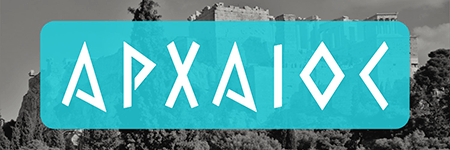Archaeologists excavating at Beth-Shemesh uncovered a structure identified as an ancient temple dating to approximately 1100 BC which had been destroyed and perhaps desecrated. The city had been excavated in 1911-12, 1928-33, and renewed excavations began in 1990. Ancient Beth-Shemesh is about 20 km (12 miles) west of Jerusalem in the Sorek Valley. In the time of the Judges and the Monarchy, it was near the border of Philistia, and Samson lived nearby. The name of the site, translated “House of the Sun (or Sun god)” appears to pay homage to the Sun god and probably originated with the Canaanites who lived at the site in the Bronze Age. In the Bible, the city is first mentioned in Joshua 15:10 in describing the borders of the territory of Judah.
The newly discovered building complex is apparently raised, with a circular stone structure on one side. A rectangular structure containing three large, worked circular stones laid in a row was tentatively identified as a temple. The pottery inside the rectangular building–only pieces of chalices and goblets–indicated that it was not a domestic building (which would have contained cooking pots, bowls, etc.). All around one of the worked, rounded stones were animal bones, perhaps remnants from sacrifices. It was suggested that the other two stones held or directed liquids as part of ceremonial or religious libations. Thus far, there have been no pig bones discovered, which indicates that Israelites were living at the site. Archaeological findings indicate that after a period of use, the temple had been destroyed and perhaps even desecrated. Above the layer of the temple the excavators found evidence that animals had fed and lived where the temple used to stand; their suggestion is an animal pen meant to desecrate the previously holy site.
This temple, which was in use around 1100 BC, would have been standing during part of the life of Samson and during the famous battle between the Philistines and Israelites at Aphek in which the Ark of the Covenant was lost (Judges 13-16; 1 Samuel 4-6). If the temple was prominent at that time, then Samson was likely familiar with it, since he lived nearby and Beth-Shemesh was the largest city in the area. The battle at Aphek between the Philistines and the Israelites, which occurred around 1100 BC, may have had an impact on this temple–either by the hand of the Philistines or the hand of the Israelites. The loss was staggering for the Israelites, and the Philistines may have destroyed parts of multiple cities in the border region. However, when the Ark was returned to the Israelites, it arrived at Beth-Shemesh. “The Levites took down the Ark of YHWH and the box that was with it, in which were the articles of gold, and put them on the large stone. And the men of Beth-Shemesh offered burnt offerings and sacrificed sacrifices that day to YHWH” (1 Samuel 6:15). The city of Beth-Shemesh had not been destroyed by the Philistines, but perhaps the temple where some of the Israelites sacrificed had been destroyed and the people and the city spared. However, there is another possible explanation. Since the only Israelite house of worship that was permitted at this time was in Shiloh, and later moved to Jerusalem where the Temple would be constructed, the temple at Beth-Shemesh may have been obliterated by Israelites in response to the Law of Moses. Even in the time of the Judges there were situations in which the Israelites had torn down pagan or unsanctioned shrines and temples (cf. Judges 6:28). This temple destruction and desecration at Beth-Shemesh may have been the result of a similar situation, since the Israelites continued to live at the site even after the loss to the Philistines at Aphek.
